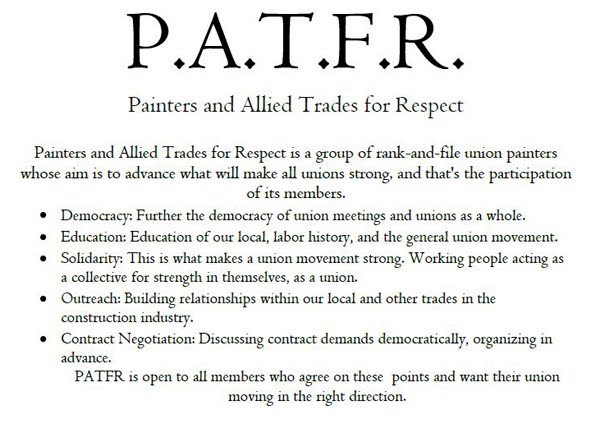Info on the history of apprenticeships
The National Apprenticeship Act
50 Stat. 663; 29 U.S.C 5O states: "To enable the Department of Labor to formulate and promote the furtherance of labor standards necessary to safeguard the welfare of apprentices and to cooperate with the States in the promotion of such standards. Be it enacted by the Senate and House of Representatives of the United States of America in congress assembled, That the Secretary of Labor is hereby authorized and directed to formulate and promote the furtherance of labor standards necessary to safeguard the welfare of apprentices, to extend the application of such standards by encouraging the inclusion thereof in contracts of apprenticeship, to bring together employers and labor for the formulation of programs of apprenticeship, to cooperate with State agencies engaged in the formulation and promotion of standards of apprenticeship, and to cooperate with the National Youth Administration and with the Office of Education of the Department of the Interior in accordance with section 6 of the Act of February 23, 1917 (39 Stat. 932), as amended by Executive Order Numbered 6166, June 10, 1933, issued pursuant to an Act of June 30, 1932 (47 Stat. 414), as amended. Sec. 2. The Secretary of Labor may publish information relating to existing and proposed labor standards of apprenticeship, and may appoint national advisory committees to serve without compensation. Such committees shall include representatives of employers, representatives of labor, educators, and officers of other executive departments, with the consent of the head of any such department. Sec. 3. On and after the effective date of this Act the National Youth Administration shall be relieved of direct responsibility for the promotion of labor standards of apprenticeship as heretofore conducted through the division of apprentice training and shall transfer all records and papers relating to such activities to the custody of the Department of Labor. The Secretary of Labor is authorized to appoint such employees as he may from time to time find necessary for the administration of this Act, with regard to existing laws applicable to the appointment and compensation of employees of the United States: Provided, however, That he may appoint persons now employed in division of apprentice training of the National Youth Administration upon certification by the Civil Service Commission of their qualifications after nonassembled examinations. Sec. 4. This Act shall take effect on July 1, 1937, or as soon thereafter as it shall be approved. Approved, August 16, 1937."
Education for work or organized apprenticeship had its beginning in about 2000 B.C. for scribes in Egypt. Thus, education for work was organized in such a way that basic knowledge could be developed in a hybrid classroom setting and then applied skills could be developed on-the-job.
The rules for governing apprenticeships were included in the Code of Hammurabi, who placed a code of his laws in the temple of Shamash in 2100 B.C. However, apprenticeships did not really become widespread until the Middle Ages. As tools became more complex, and the knowledge and skills to use them became more specialized, parents or others could no longer teach their children all they needed to know so they were apprenticed to craftspersons or artisans who had the specialized skills and tools for a particular trade. In exchange for work, the craftsperson would teach the child the craft at which he was an expert. Apprentices normally lived with the craftsperson, and received no pay except for maintenance, as the learning of a skill was considered highly valuable.
Guilds, associations of people who interests or pursuits were the same or similar, were an important part in apprenticeship as they established the quality standards for the product and practice. During the peak of the guild system, which occurred between the twelfth and fifteenth centuries, the yeomen were protected by strict regulation of hours, tools, prices, and wages.
No great antiquity is generally allowed to the system of apprenticeship in England, doubtless owing to the lack of evidence. Instruction of sons by fathers is admittedly ancient. But some kind of arrangement whereby a craftsman or trader, for a consideration, taught another man's son appears so natural that one would be disposed to consider it almost as ancient as the crafts and trades themselves. Not all craftsmen had sons of their own to teach. Moreover the early association of workers into guilds would tend to break down family exclusiveness. Hence it is not unreasonable to suppose that apprenticeship was common long before it is first recorded as a normal custom.
1640 indenture of Thomas Millard out of England into New England:
Know all men that I, Thomas Millard, with the Consent of Henry Wolcott of Windsor unto whose custody and care at whose charge I was brought over out of England into New England, doe bynd myself as an apprentise for eight yeeres to serve William Pynchon of Springfield, his heirs and assigns in all manner of lawful employmt unto the full ext of eight yeeres beginninge the 29 day of Sept 1640. And the said William doth condition to find the said Thomas meat drinke & clothing fitting such an apprentise & at the end of this tyme one new sute of apparell and forty shillings in mony: subscribed this 28 October 1640. What it was like to be an apprentice in early New England is indicated by these words from a 1640 indenture. As it turned out, apprentice Millard lost out on the cash mentioned. The following statement is made at the foot of the indenture: Tho Millard by his owne consent is released & discharged of Mr. Pinchons service this 22. of May 1648 being 4 months before his tyme comes out, in Consideration whereof he looses the 40s in mony wch should have bin pd him, but Mr. Pynchon givith him one New sute of Aparell he hath at present.
by Thomas Millard 22nd of May 1648
Subscribe to:
Post Comments (Atom)









No comments:
Post a Comment